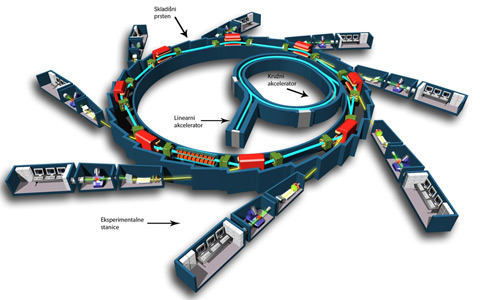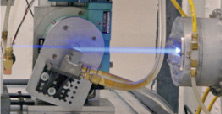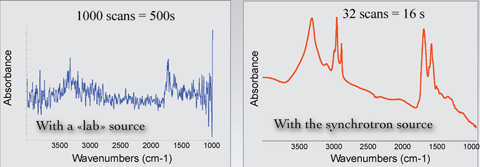Croatian Conservation Institute has since 2011 been involved in the project of researching the synchrotron-based techniques for the protection of stone monuments with calcium oxalate. The research is aimed at optimizing the treatment of stone with ammonium oxalate in order to create a protective layer of calcium oxalate in a way that is more economically acceptable than is the application of pulp over large stone surfaces. The results of this research were used for the final protection of stone in the last phase of conservation work on the Peristyle of the Diocletian’s Palace in Split..

In the last ten years the area of natural sciences which focuses on cultural heritage moved in the direction of applying very sensitive analytical methods. The need for analyzing works of art or the samples taken from them on micro or nano level, whether to determine the composition of materials, investigate the process of their deterioration or new materials for e.g. the protection of cultural heritage materials, all this has led to the increased use of synchrotrons. Synchro… of what? The synchrotron is a kind of circular particle accelerator in which the magnetic field (which determines the trajectory of particles) and the electric field (which accelerates the particles) are perfectly synchronized with the rotating particle beam. The charged particles, mostly electrons, are pre-accelerated by the electric field in the linear accelerator up to the energies of several hundred MeV and several GeV. After this they are accelerated in the circular accelerator using magnetic and electric fields, until they reach the speed that is close to the speed of light. Electrons are then injected into the synchrotron ring where strong magnetic fields maintain their circular trajectory. What is obtained is the radiation around a 100 billion times as strong as the x-ray radiation used in hospitals.
 The synchrotron itself actually represents a large “bulb” or radiation source onto which various analytical instruments are connected. Classic laboratory instruments connected to such a radiation source become far more sensitive, thus enabling the research of materials and physical-chemical processes on micro and nano level.
The synchrotron itself actually represents a large “bulb” or radiation source onto which various analytical instruments are connected. Classic laboratory instruments connected to such a radiation source become far more sensitive, thus enabling the research of materials and physical-chemical processes on micro and nano level.

Since 2011 the Natural Science Laboratory of the Croatian Conservation Institute has been involved in the project of researching the synchrotron-based techniques for the protection of stone monuments with calcium oxalate. Taking part in the project are Domagoj Mudronja, PhD from the Institute, Prof. Koen Janssens, PhD, Frederik Vanmeert, PhD and Kevin Hellemans, PhD from the Department of Chemistry, University of Antwerp, Stjepko Fazinić, PhD from the Ruđer Bošković Institute, Prof. Darko Tibljaš, PhD from the Faculty of Science, University of Zagreb and others. The analytical methods of FT-IR microscopy and µXRD spectroscopy were used in this research on the Swiss Light Source Synchrotron at the Paul Scherrer Institute in Villigen, Switzerland and the Soleil Synchrotron near Paris. The aim of the research was to optimize the treatment of stone with ammonium oxalate in order to create a protective layer of calcium oxalate in a way that is more economically acceptable than is the application of pulp over large stone surfaces. The results of the research were published in two scientific papers:
- Efficiency of applying ammonium oxalate for protection of monumental limestone by poultice, immersion and brushing methods
- Semi-quantitative analysis of the formation of a calcium oxalate protective layer for monumental limestone using combined micro-XRF and micro-XRPD
The results of this research were used for the final protection of stone in the last phase of conservation work on the Peristyle of the Diocletian’s Palace in Split.
Photo Album
A follow up to the research is under way, using the same methods on the Soleil Synchrotron near Paris and aimed at optimizing the treatment of stone with ammonium oxalate in order to more successfully create a protective layer of calcium oxalate over various types of limestone and marble than was the case with the initially researched limestone of the type Veselje (joy) from the island of Brač.
The study was financed by the EU FP7 project Charisma, the International Atomic Energy Agency (IAEA) and the Belgian Fund for Scientific Research.





